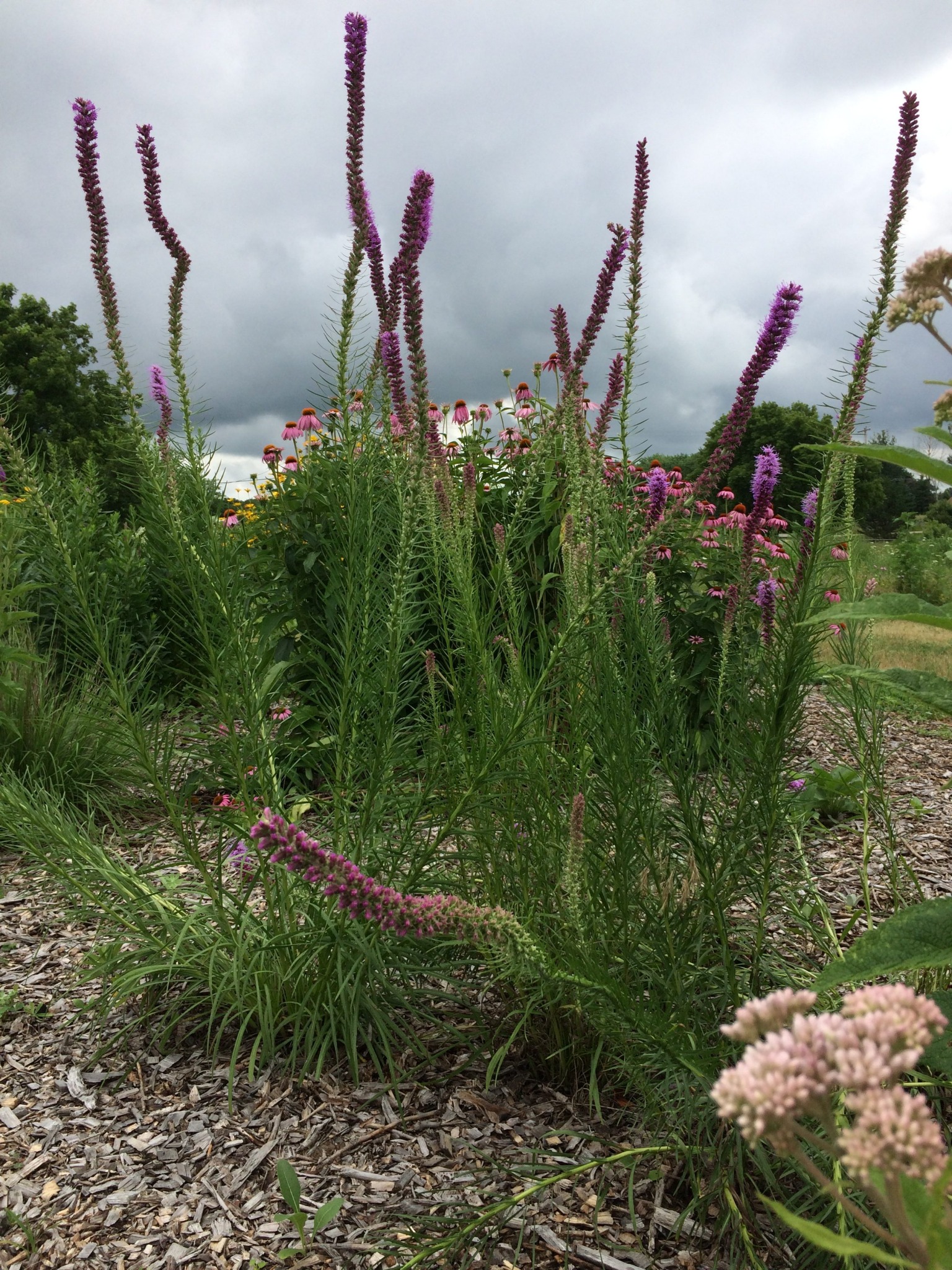Description
OUT OF STOCK
Tall, erect, purplish- pink spike in August-September
Tall, erect, purplish- pink spike in August-September
OUT OF STOCK
Tall, erect, purplish- pink spike in August-September
OUT OF STOCK
Lemon yellow silky petals bloom late spring to early fall on this tough-as-nails native
Size: 9-18” x 12-15”
Care: sun in well-drained soil, drought tolerant
Native: Great Plains: Central Canada to TX, Michigan to Montana, WI native
1st described in 1818 by Thomas Nuttall, English planthunter who collected hundreds of “new” plants in North America. Caly is Greek for calyx; lophos for “the back of the neck; crest of a hill or helmet” serrulatus means “minutely serrate” or “saw-toothed” describing the leaf margins.
The description in the Chiltern Seeds catalog cannot be improved: “This is the most elegant and refined of the North American prairie grasses …the finest texture composed of the thinnest of thin, thread-like, glossy green blades,.. in autumn turning deep orange before fading to a light copper for the winter. In late summer the plants bear, on very slender stalks high above the foliage, unbelievably delicate, graceful flower panicles, excellent for cutting. ”One of internationally known garden designer Piet Oudolf’s 100 “MUST HAVE” plants, Gardens Illustrated 94 (2013)
Size: 2’ x 2’
Care: Full sun in well-drained soil
Native: from Canada in the north to Texas in the south, Wisconsin native
Wildlife Value: seeds are food for birds
Awards: Missouri Botanic Garden Plant of Merit & Great Plants for Great Plains Grass of the Year.
Sporobolos is Greek from sporo meaning seed and ballein meaning to cast forth because the seed readily falls from the flower (or dropseed, the common name). Ojibwa “Medicine Society” used roots to cure sores & “remove bile.”
Brilliant orange with purple spots, turks-cap lily with dramatic, swept-back petals blooming late summer to early fall. Slow to mature but when it does it bears up to 40 flowers on one plant.
Size: 10’ x 12”
Care: Sun in moist to moist-well-drained, acidic soil
Native: from VT to Fl & west to Mississippi River, Wisconsin native
Lilium was named for the Greek word for smooth, polished referring to its leaves. This collected before 1665. In his 1665 book, Flora, seu de Florum Cultura John Rea, nurseryman and author, called it the “Virginia Martagon.” Sold in America’s 1st plant catalog, Bartram’s Broadside, 1783. L.H. Bailey (1913): “The most magnificent and showy of native North American species, well worthy of extensive cultivation.”
Wispy, feather-like seedheads atop blue-grey foliage that turns plum-orange-red in fall
Size: 18" x 12"
Care: sun in well-drained soil.
Native: all No. America, Wisconsin native.
Wildlife Value: leaves are food for Skipper butterfly caterpillars and seeds food for songbirds
Comanche used it to remedy syphilitic sores. Lakota made soft, wispy seedheads into liners for moccasins. Collected by French plant hunter André Michaux (1746-1802) in America’s prairies c. 1790

